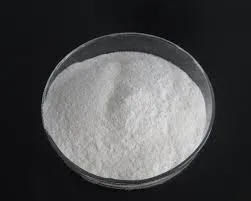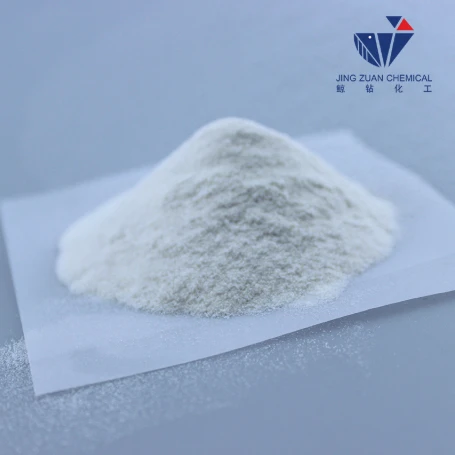
Jul . 05, 2025 08:38 Back to list
HPMC Uses & Grades Versatile Applications in Detergents & Industries – High Quality HPMC Solutions
- Introduction to HPMC Uses
- Understanding Grades and Properties of HPMC
- Technical Advantages in Various Industries
- Manufacturer Comparison: Data-Driven Insights
- Customized Formulations Based on End-Use
- Case Studies: HPMC in Real-World Applications
- Conclusion: The Versatility and Future of HPMC Uses

(hpmc uses)
Introduction to HPMC Uses
Hydroxypropyl Methylcellulose (HPMC) has emerged as a multifunctional polymer with a broad spectrum of applications across industries such as construction, pharmaceuticals, food, and detergents. Its unique properties—water retention, film formation, thickening, and stabilization—make it a prime choice for formulators seeking superior performance and consistent results. Among the numerous HPMC uses, its role in detergents, as a binder and rheology modifier, is highly valued for delivering optimal consumer experiences and process efficiencies. The market for HPMC is projected to reach nearly $2.1 billion by 2028 with a CAGR of 6.9%, underlining the material’s growing significance and versatility.
Understanding Grades and Properties of HPMC
The characteristics and performance of HPMC depend significantly on its grade. Manufacturers tailor cellulose sources, substitution types, viscosity, and particle size to produce distinct HPMC grades and uses appropriate for various sectors. For instance, in the construction industry, high-viscosity HPMC provides exceptional water retention to extend workability of mortars and plasters. In contrast, pharmaceutical grades offer high purity and controlled dissolution rates for tablets and capsules. Food-grade HPMC is characterized by stringent safety standards and optimized texture profiles, making it ideal as an emulsifier and thickener.
Key performance indicators for different grades typically include:
- Viscosity: Determines thickening efficiency (5,000 – 200,000 mPa·s for construction applications).
- Gel Temperature: Critical for thermoreversible gelation, notably important in food and pharmaceutical preparations.
- Degree of Substitution (DS): Influences solubility and water resistance ability.
- Particle Size: Fine powders ensure rapid dispersibility in water-based formulations.
Technical Advantages in Various Industries
HPMC’s adaptability is rooted in its molecular structure, enabling it to deliver outstanding technical benefits tailored to specific sectors.
- Construction: Provides improved water retention (up to 97%), leading to better curing and enhanced strength in cementitious systems. Offers excellent workability and sag resistance in tile adhesives and skim coats.
- Pharmaceutical: Acts as a film-forming agent in coatings, a binder in granulation, and a sustained release matrix in controlled-release tablets. Certified grades comply with USP/NF, Ph.Eur., and JP pharmacopoeias.
- Food: Used as an emulsifier, stabilizer, and fat replacer in processed foods, and as an alternative to gelatin in vegetarian capsules and jellies.
- Detergents: In detergent applications, HPMC uses in detergent focus on its function as a soil anti-redeposition agent, providing suspension stability even in hard water. It improves the rheology of liquid detergents, prevents caking in powders, and enhances foam stability in specialty cleaners.
Manufacturer Comparison: Data-Driven Insights
The global HPMC market is dominated by several key manufacturers, each offering proprietary grades with unique technical and commercial advantages. Below is a comparative data table highlighting critical performance metrics and certifications:
| Manufacturer | Featured Grades | Viscosity Range (mPa·s) | Water Retention (%) | Certifications | Market Application Focus |
|---|---|---|---|---|---|
| DOW (Methocel™) | F4M, K4M, E15 | 4,000 - 100,000 | 95-98 | USP, Ph.Eur., Kosher, Halal | Pharma, Food, Construction |
| Ashland (Benecel™) | PH, MX, L | 6,000 - 180,000 | 96-98 | USP, JP, NSF | Pharma, Detergent, Cosmetics |
| Lotte Fine Chemical | SE-6000, SE-100000 | 6,000 - 100,000 | 95-97 | Halal, Kosher, ISO | Construction, Detergent |
| Shandong Ruitai | RT4000, RT150000 | 4,000 - 150,000 | 94-96 | ISO, SGS, BV | Detergent, Construction |
| SETylose (SE Tylose®) | MHEC, MHPC | 5,000 - 150,000 | 95-98 | FCC, USP, ISO | Food, Pharma, Cosmetics |
As reflected in the table, manufacturers differ not only in the breadth of grades but also in application specialization and global certifications. For example, DOW and Ashland excel in pharmaceutical and food sectors with higher compliance standards, while Asian manufacturers like Lotte and Shandong Ruitai provide customs grades at attractive prices for the construction and detergent markets.
Customized Formulations Based on End-Use
The diversity in HPMC grades and uses empowers formulators to select or develop customized formulations addressing precise performance requirements. Manufacturers offer technical support and R&D collaborations for tailored solutions:
- Detergent Industry: Custom HPMC blends are optimized for powder fluidity, suspension clarity, and foam lifespan. Some manufacturers incorporate anti-redeposition and perfume-retention properties.
- Construction Applications: Unique blends enhance open time, improve adhesion, and even impart anti-crack features to mortars and tile adhesives under diverse climatic conditions.
- Food & Pharma: Grades are designed to withstand heat treatment and maintain clarity in clear beverages, or to provide rapid dispersion for instant gels and tablets.
Case Studies: HPMC in Real-World Applications
To illustrate the real-world impact of HPMC, consider the following cases across key industries:
- Powder Laundry Detergents: A leading FMCG brand switched to an HPMC-based anti-redeposition agent and reported a 16% reduction in residues on dark fabrics versus standard polyacrylate systems. Additionally, foam stability improved by 21% after formulation adjustments.
- Tile Adhesives: Use of high-viscosity HPMC in a European adhesive manufacturer’s formulations increased open time by 38% and reduced slump by 42%, contributing to better tile alignment and productivity on job sites.
- Pharmaceutical Controlled-Release Tablets: Implementation of premium HPMC grades for matrix tablets achieved a 95%+ compliance with target release profiles, improving patient outcomes and manufacturing yields in large-scale clinical formats.
- Fat-Free Desserts: Replacement of animal-derived gelling agents with certified food-grade HPMC produced stable, clear gel structures resistant to syneresis even after three weeks of storage at 4°C, appealing to health-conscious and vegetarian consumers.
These application examples underscore the material’s utility in enhancing product quality, operational efficiency, and consumer satisfaction.
Conclusion: The Versatility and Future of HPMC Uses
In summary, the evolving landscape of HPMC uses continues to be shaped by advancements in polymer science and growing industry demands for safer, more efficient, and environmentally compliant ingredients. As new applications emerge in personal care, biotechnology, and even battery electrodes, HPMC’s adaptability and sustainability credentials make it a go-to choice for forward-looking manufacturers. Continuous innovation in HPMC grades and uses promises further breakthroughs in product performance and value chain efficiencies, ensuring its relevance for decades to come.

(hpmc uses)
FAQS on hpmc uses
Q: What are the main HPMC uses?
A: HPMC (Hydroxypropyl Methylcellulose) is widely used as a thickener, binder, and film former. Its applications span pharmaceuticals, construction, food, and cosmetics. It offers excellent solubility and stability in water-based systems.Q: What are the popular HPMC grades and their uses?
A: HPMC grades differ based on viscosity, substitution, and gel temperature. Low-viscosity grades are used as binders in tablets, while higher grades serve as thickeners in building materials. The appropriate grade ensures optimal performance in each application.Q: What are common HPMC uses in detergent formulations?
A: HPMC is used in detergents as a thickener and stabilizer. It helps create a consistent texture and enhances the detergent’s cleaning performance. Additionally, it prevents ingredient separation during storage.Q: How does HPMC benefit construction materials?
A: In construction, HPMC improves water retention, workability, and adhesion of products like mortar and tile adhesives. It also enhances open time and spreadability. These benefits result in better application performance.Q: Why is selecting the right HPMC grade important for its use?
A: The properties of HPMC, such as viscosity and substitution, directly affect its function in specific uses. Choosing the correct grade ensures the product meets performance expectations. It also optimizes cost-effectiveness and efficiency.-
Versatile Hpmc Uses in Different Industries
NewsJun.19,2025
-
Redispersible Powder's Role in Enhancing Durability of Construction Products
NewsJun.19,2025
-
Hydroxyethyl Cellulose Applications Driving Green Industrial Processes
NewsJun.19,2025
-
Exploring Different Redispersible Polymer Powder
NewsJun.19,2025
-
Choosing the Right Mortar Bonding Agent
NewsJun.19,2025
-
Applications and Significance of China Hpmc in Modern Industries
NewsJun.19,2025







